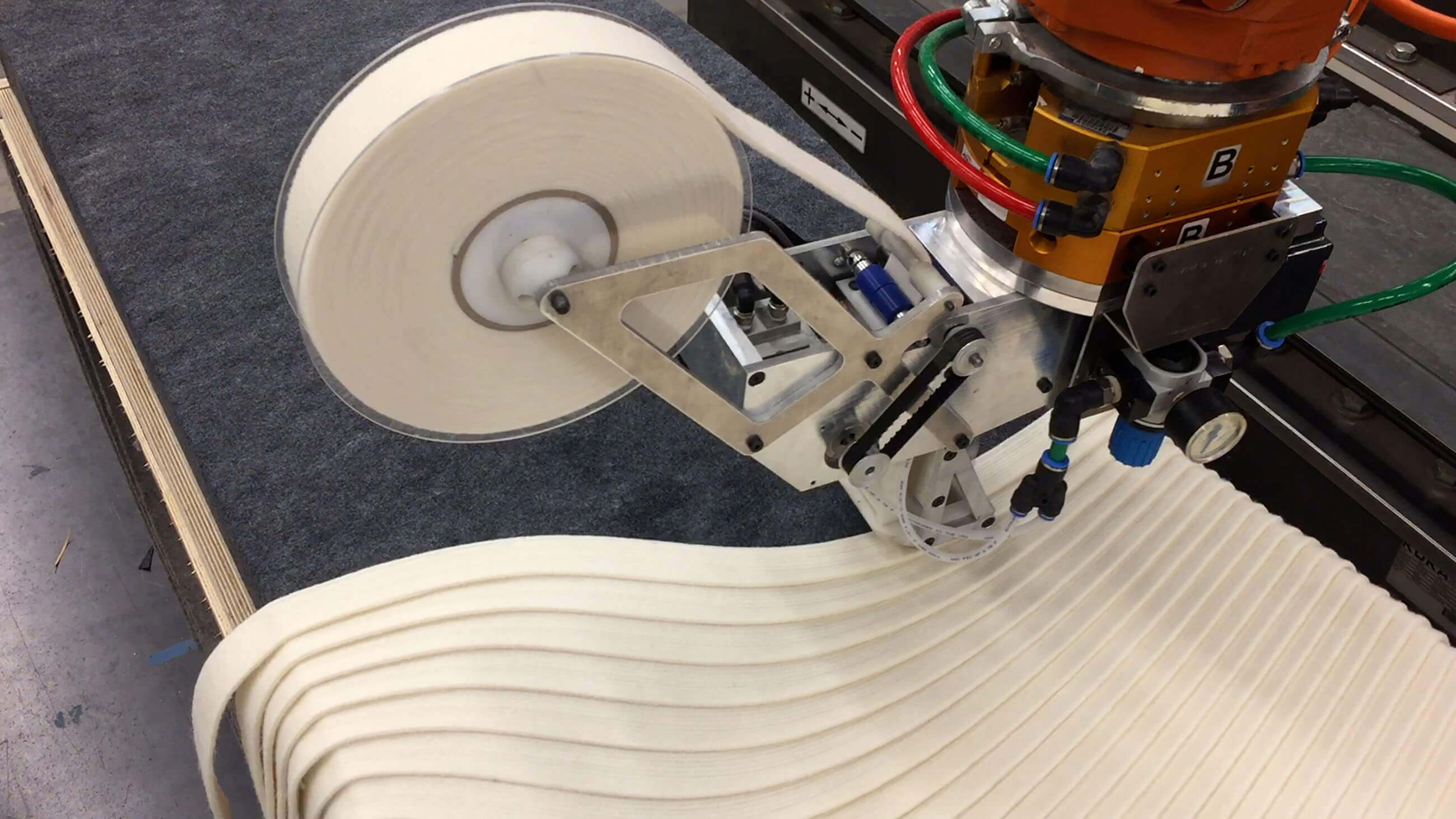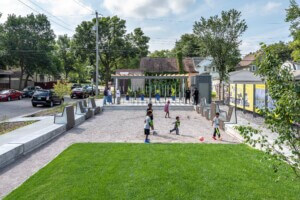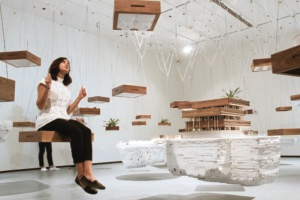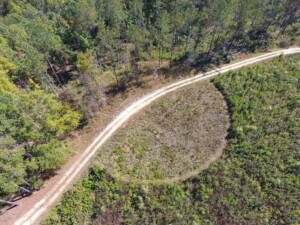This article is part of our series of profiles on the Architectural League of New York’s 2022 Emerging Voices winners. The full list can be found here.
JA Architecture Studio and Tsz Yan Ng Design will present on their respective work on March 17 at 6:30 P.M. and more information can be found here.
Tsz Yan Ng is a Michigan-based firm principal, professor, researcher, and artist whose interdisciplinary and collaborative work seeks to challenge and improve upon modern fabrication and manufacturing practices. “We haven’t changed the way we build in so long,” Ng said. “We need to think of it more productively—not just economically—but as a collection of different voices. Architecture is a global ecosystem of people, where the sum is greater than the parts.”

Raised by parents in the garment business, from a young age Ng has been acquainted with the manufacturing industry and its shortcomings. She teaches a class at the University of Michigan on “Sartorial Architecture,” which examines architectural and clothing manufacturing alongside these industries’ global economic, social, political, and environmental impacts. The course challenges students to grasp the complexities surrounding the production of a simple t-shirt and imagine applicable solutions to counter the system’s many flaws. At the heart of this discussion is the issue of labor and how modern technologies can be used to alleviate unfavorable conditions for laborers as well as optimize and expand upon existing building practices.
The textile industry is further examined in Ng’s independent practice, where her second major interest—concrete—also comes into play. For 15 years, Ng has conducted extensive scientific and applied research on textile manipulation and concrete forming. Her recent endeavors include 3D printing with engineered cementitious composites and robotic needle felting. These two passions coalesced with the design of a garment factory in Shantou, China for New York-based fashion brand, Lafayette 148. The form of the building was driven entirely by the organizational structure of garment production, while innovations in concrete aided in providing open, well-lit, and ventilated workspaces. Experimentation in post-tensioning the concrete allowed for extended spans without column interruptions and a punctured concrete brise-soleil, curved to resemble a woven textile, opens the facade to light and air.
Throughout her career, Ng has situated her work in the R&D space of building science, which she hopes will see more investment in the coming years. These explorations pull in professionals of many disciplines—roboticists, material scientists, engineers, historians—furthering Ng’s belief that collaboration across many fields is the key to pushing all architecturally related industries into a safer, cleaner, more equitable, and more productive future.











